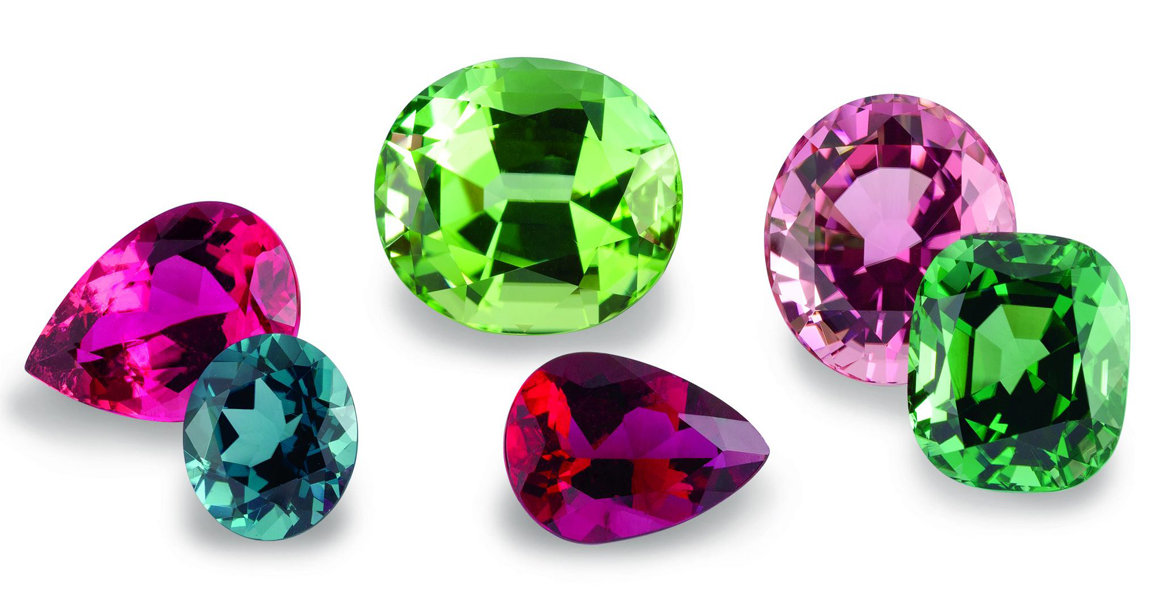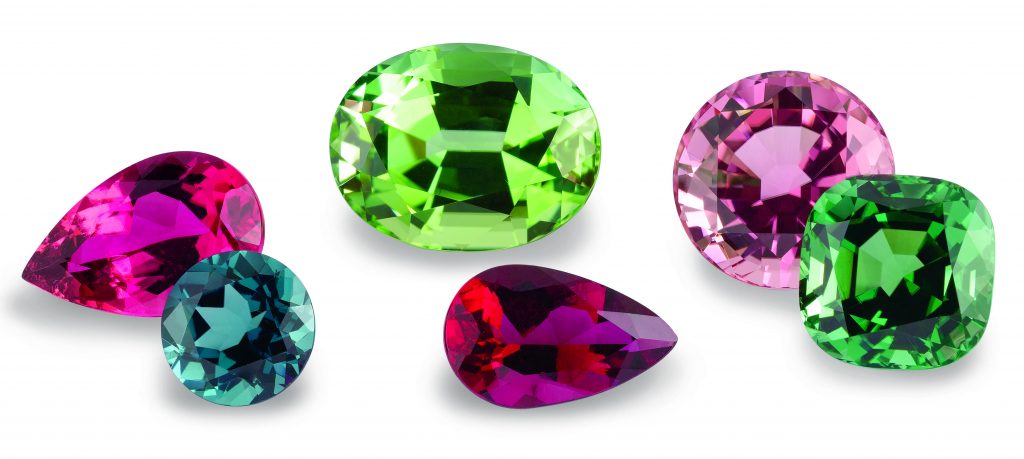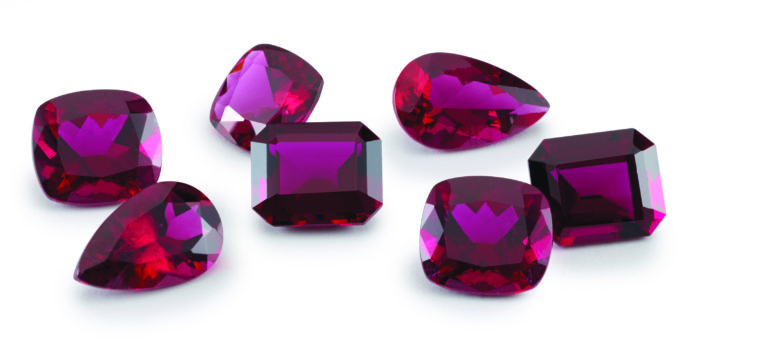
Every design can benefit from a well-placed pop of color — and there’s perhaps no gemstone better suited for this than tourmaline. With its clean lines, elongated crystals, and range of colors, tourmaline gemstones are just what you need for eye-catching, vivid center stones.
A more contemporary design might use a tri-color (sometimes referred to as parti-colored) tourmaline. At the same time, a classic style can get a sweet makeover with a less traditional color, such as mint tourmaline. No matter the aesthetic you’re going for, tourmaline likely has what you need.
Colorful Tourmaline Gemstones
As tourmaline has one of the largest color ranges in the gemstone world, it is a great fallback for an alternative color option. Imagine these scenarios:
A customer says, “I want blue, but I don’t want a traditional sapphire.”
What can you offer? Blue tourmaline.
“I want yellow, but something more extraordinary than citrine.” What now? Yellow tourmaline.
“I want something that is entirely unique that no one else will ever have.” You got it — tourmaline!
You get where I’m going with this. Tourmaline has all the colors of the rainbow and offers some gorgeous colors. But they have so much more going on than just color alone.
Tourmaline gemstones are found on every continent of the world, although the most beautiful ones come from South America and Africa. Some would argue that stones found in the United States hold a particularly beautiful place and certainly lend to a Made in the USA theme. But no matter where it’s from, the quality of tourmaline is based on its overall appearance, and each color has a different expectation.

Paraíba Tourmaline
Paraiba should be bright and lively with a crisp patina of copper color. It can range anywhere from a turquoise blue to a radiant green and many shades in-between. If it’s the color of Windex, you are on the right path!
Perhaps most famous of all hues for tourmaline is pink — hello, October birthstone. From deep and broody to bright and cheerful, pink tourmaline offers the end consumer a plethora of colors that will fit even the pickiest of tastes. But remember it’s much harder to get with a clean crystal, so prep your customers ahead of time.
Rubellite Tourmaline
Rubellite, the trade name for red tourmaline, includes purplish-red, orangey-red, and brownish-red shades. As their name (get it — ruby?) suggests, Rubellite tourmaline is the red variety.
It’s always best to clarify a gem’s modifying colors with your vendor, if they don’t offer it in the description. Some within the industry use Rubellite to refer to a pink stone. It doesn’t have to be perfectly red, but it needs to be more red and bubblegum pink to get the designation of Rubellite.

Indicolite Tourmaline
If pink is the most well-known color of tourmaline, blue is likely the least. Indicolite tourmaline comes in some pretty interesting shades, from true navy to intense teal. Generally seen with darker tones (although not always), Indicolite has recently become a trending sensation. It’s an affordable blue alternative, and many come with eye-clean crystals in amazing cuts and shapes.
For Something a Little Different…
Watermelon and bi-, tri-, and quad-color tourmaline are the oddballs of the tourmaline family, blending colors in striking and unusual ways.
Watermelon tourmaline is generally seen in slices that show the green outer rim with a spirited pink center.
Bi, tri, and quad colors are just that: stones that show multiple colors within a single stone and are often found in many shapes and cutting styles. I find the long, lean emerald cuts a particularly interesting way to showcase the subtle flow of colors. A new twist on the understated bar necklace? I think so!

From color range and crystal shapes to captivating juxtapositions and brilliant colors, there are stones I often revisit for inspiration. There are some things that are just endless pools of ideas. And I hope tourmaline gemstones will become your new inspiration, too.





Everything is very open with a precise clarification of the challenges. It was definitely informative. Your site is useful. Thanks for sharing!